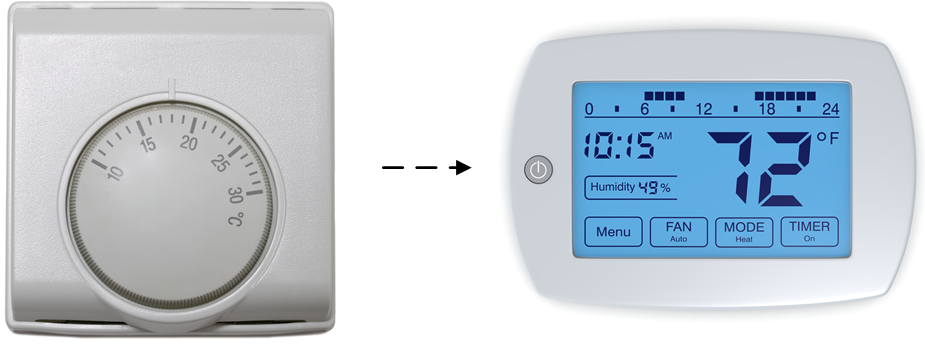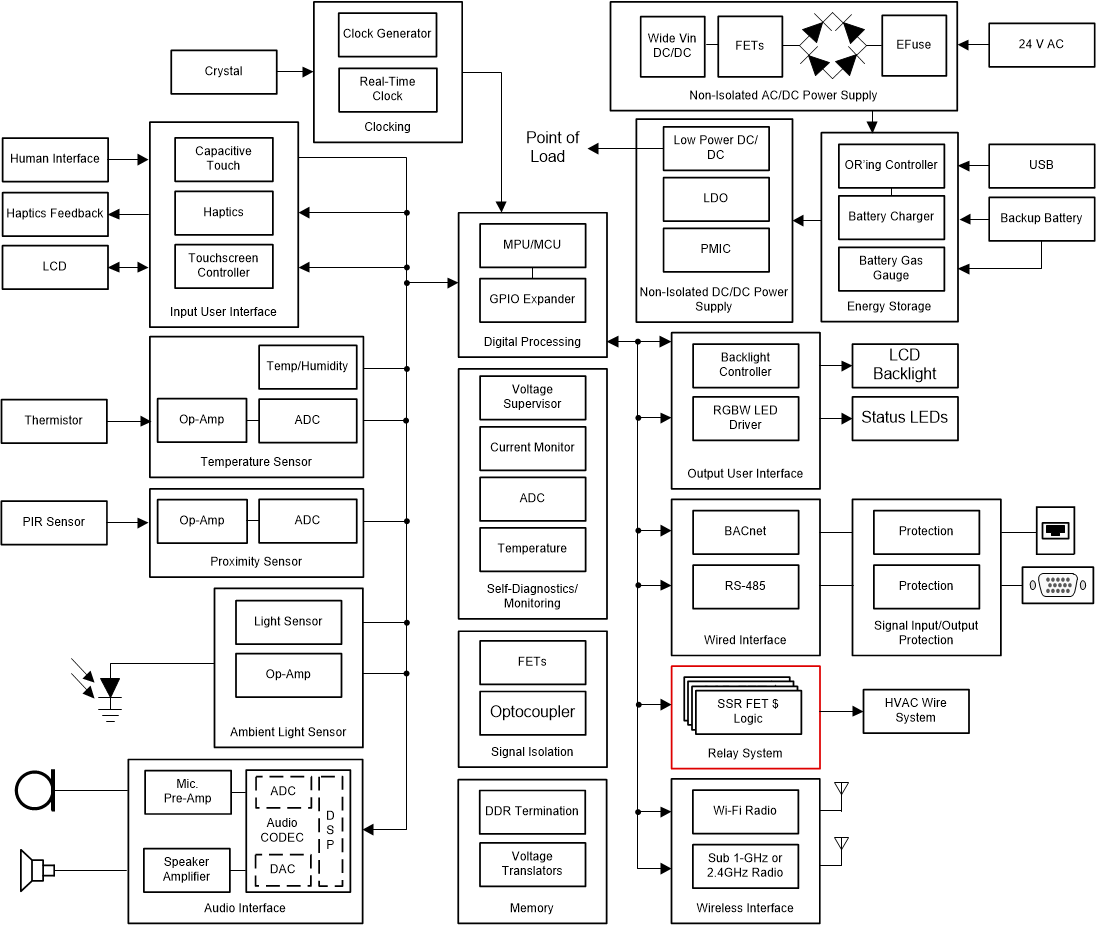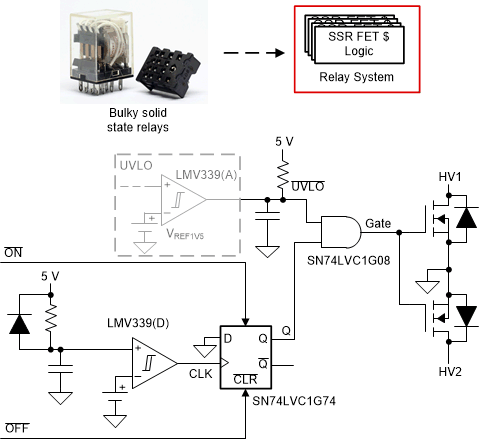SCLA041 January 2021 SN74HCS08 , SN74HCS74 , SN74LVC1G08 , SN74LVC1G74 , SN74LVC2G08 , SN74LVC2G79
Application Brief
Analog applications have utilized mechanical relays to interface between higher voltage sub-systems and lower voltage control sub-systems. Historically, relay functionality has been implemented using electro-mechanical relays that are costly, large, bulky, and prone to wear over time, potentially leading to reliability issues. Solid-state relays are replacing traditional mechanical relays in many newer digital systems especially for smaller form factor applications such as smart thermostats and building control panels. Using simple building block IC circuits, designers can implement a solid-state relay that will eliminate electro-mechanical relay with a robust IC-based circuit solution. Simple logic devices can be used to help optimize and simplify solid-state relay implementations.
The solid-state relay control logic circuitry shown in the figure (right) uses simple logic devices such as the SN74LVC1G74 D-type flip-flop and the SN74LVC1G08 positive AND gate, to initiate the turn on and off the MOSFETs that are used in the solid-state relay implementation. Using simple logic ICs provide an efficient, robust, and cost-effective control circuit for a solid-state relay that can be implemented within applications such as thermostats, building HVAC control panels, or almost any other system where solid-state relays can be used to replace traditional mechanical relays. For more information on TI logic solutions, see www.ti.com/logic.
|
Device |
Function |
|---|---|
| SN74LVC1G08 | Single two-input AND gate |
| SN74LVC2G08 | Dual two-input AND gate |
| SN74HCS08 | Quad two-input AND gate |
| SN74LVC1G74 | Single D flip-flop |
| SN74LVC2G79 | Dual D flip-flop |
| SN74HCS74 | Schmitt-trigger input dual D flip-flop |


